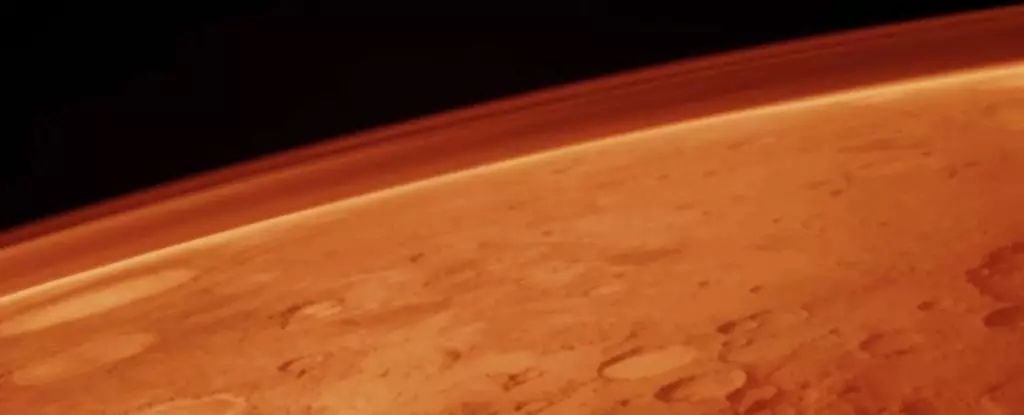The dream of terraforming Mars has captivated the imaginations of scientists, writers, and futurists alike. The notion of transforming the barren, hostile landscapes of the Red Planet into a thriving, Earth-like habitat is undeniably alluring. However, an analysis of the scientific challenges involved reveals a daunting reality that often gets obscured by the excitement surrounding the concept. The complexities of physics, the vast amounts of materials required, and the energy constraints present formidable obstacles—many of which are highlighted by recent research delving into the feasibility of such an ambitious project.
Understanding the Atmospheric Challenge
The core issue that pulses at the heart of terraforming Mars is its atmospheric pressure—or lack thereof. Current studies, including those presented at esteemed scientific conferences, underscore the drastic differences between Martian conditions and those we experience on Earth. A paper from Leszek Czechowski of the Polish Academy of Sciences poignantly describes the immediate dangers of Mars’s atmosphere. With atmospheric pressure about 1% of Earth’s, water within a human body would begin to boil within seconds of exposure. Such stark realities remind us that creating a livable environment on Mars necessitates more than mere dreams; it demands rigorous engineering and scientific breakthroughs.
The pressure has to reach a critical threshold—estimated to be approximately a tenth of Earth’s atmospheric pressure—for any hope of supporting human life without specialized suits. This raises the question: how does one even begin to achieve such a monumental shift in Mars’s atmospheric composition?
Sources of Atmospheric Material
The pursuit of increasing Mars’s atmospheric pressure leads us to consider potential sources for necessary materials. According to Czechowski’s research, asteroids within the Kuiper Belt emerge as one of the most promising prospects for supplying water and nitrogen. While this idea seems straightforward, the practicality of executing such endeavors is far more complex. Bringing these icy bodies from the outer Solar System into a stable orbit around Mars poses significant logistical challenges.
The Oort Cloud, another theoretical reservoir of icy celestial bodies, holds immense potential for enriching Mars’s atmosphere, yet the realization of this resource is bogged down by time constraints. Czechowski’s calculations indicate that propelling a sizable object from the Oort Cloud to Mars could take an excess of 15,000 years—an eternity when discussing human timelines and ambitions.
Moreover, while Kuiper Belt objects might be more accessible in terms of proximity, their delivery to Mars is fraught with unpredictability. The mechanics of space travel could lead to fragmentation and loss of valuable materials long before they reach their destination. The ambition to terraform Mars is met with an almost Sisyphean task of not only moving vast quantities of mass but ensuring that this vital mass remains intact long enough to make a difference.
Mechanisms for Transformation
From a technical standpoint, Czechowski’s assessment culminates in a necessary conclusion: to move substantial bodies of material into Mars’s atmosphere, we need innovative propulsion systems that deviate from gravity-assist methods, which can often be unreliable for these fragile bodies of ice and rock. The development of advanced propulsion technologies—such as ion engines powered by fusion reactors—may hold the key to achieving these goals.
However, it’s here that realism clashes with aspiration. The engineering hurdles to develop such systems would require unprecedented advances in our current technological capabilities. While various alternative methods for terraforming Mars are being theorized, including bioengineering approaches that could potentially harness living organisms to alter the Martian environment, these solutions are riddled with their own complexities and energy demands.
Energy Demand and Practicality
The energy requirements for even modest terraforming efforts are staggering. Every scenario that dares to envision a transformed Mars grapples with the same fundamental issue: how can we muster the required energy to perform Earth-shaping feats millions of kilometers away? Current energy paradigms may not suffice, compelling researchers to think beyond today’s energy infrastructures. This raises profound questions about sustainability and innovation in space exploration.
Yet, amid the scientific skepticism, the ambition of terraforming retains a certain allure. Despite the overwhelming challenges, Mars enthusiasts remain undeterred, their dreams fueled by an insatiable curiosity and a desire to confront these grandiose obstacles. Even if achieving a livable Mars necessitates a series of monumental impacts on the planet, this sentiment hints at the broader human drive to explore, adapt, and ultimately transform. The struggle to bring Mars closer to a habitable version of itself may, in its very pursuit, inspire technological advancements and new paradigms for understanding our role in the cosmos.
More than merely a distant dream, the endeavor to terraform Mars serves as a reflection of humanity’s relentless pursuit of knowledge, exploration, and the aspiration to transcend our earthly limitations.


Leave a Reply